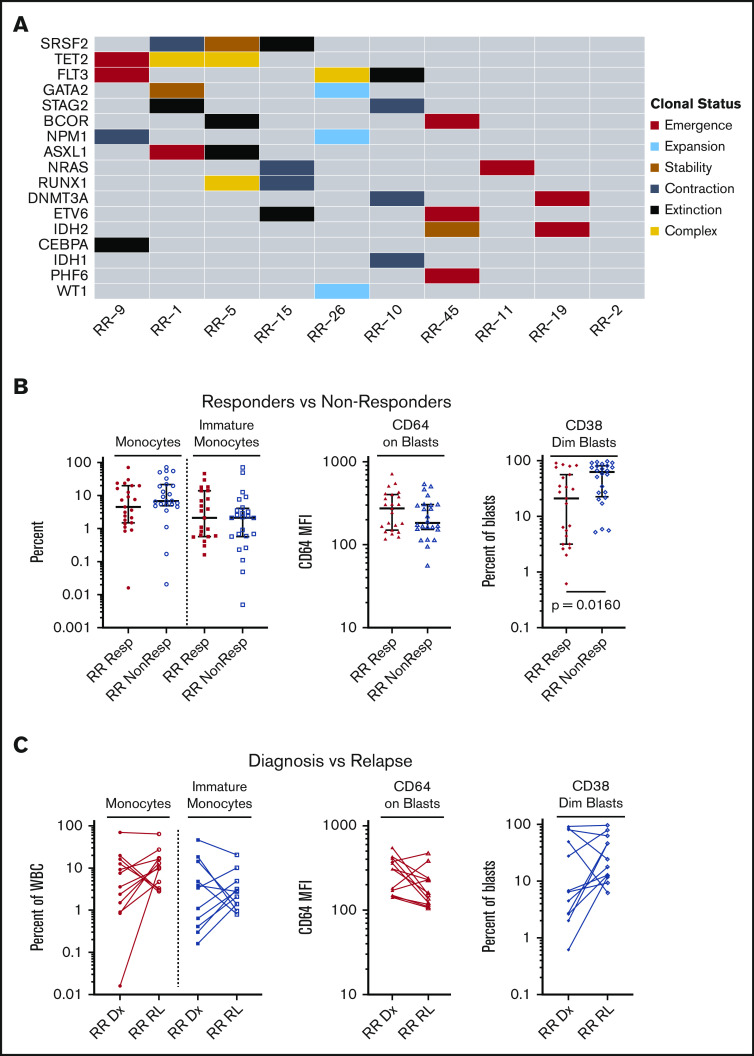Figure 5.
Molecular and immunophenotypic characteristics at time of disease relapse. (A) Changes in molecular architecture seen between time of therapy initiation and relapse for 10 patients. Patient identifiers are labeled along the x-axis and correspond to patients in the swimmer plot (Figure 1). Changes in variant allele frequency for each variant are rendered on a per-patient basis in supplemental Figure 2. (B) Immunophenotypic differences comparing responding patients (Resp) with nonresponding patients (NonResp). Resp indicates patients who achieved a CR, CRi, or MLFS. NonResp indicates patients who did not achieve a CR, CRi, or MLFS. From left to right: (1) Monocytes as a percentage of total bone marrow white blood cells (WBCs). Monocytes were identified by moderate side scatter, variable expression of CD14, CD45, and HLA-DR, and relatively bright expression of CD64. (2) Immature monocytes as a percentage of total bone marrow WBCs. Immature monocytes were identified as a monocyte population with CD11bdim, CD14dim, and HLA-DRbright. (3) Expression of CD64 on blasts, expressed as mean fluorescence intensity (MFI). Blasts were identified by CD34 or CD117 expression. (4) CD38dim blasts as a percentage of total bone marrow blasts. CD38dim blasts were identified as a blast population expressing CD38dim. (C) Changes in the immunophenotypic characteristics comparing time of treatment start (diagnosis [Dx]) to time of relapse (RL). From left to right: (1) Monocytes as a percentage of total bone marrow WBCs. Monocytes were identified by moderate side scatter, variable expression of CD14, CD45, and HLA-DR, and relatively bright expression of CD64. (2) Immature monocytes as a percentage of total bone marrow WBCs. Immature monocytes were identified as a monocyte population with CD11bdim, CD14dim, and HLA-DRbright. (3) Expression of CD64 on blasts, expressed as MFI. Blasts were identified by CD34 or CD117 expression. (4) CD38dim blasts as a percentage of total bone marrow blasts. CD38dim blasts were identified as a blast population expressing CD38dim.

